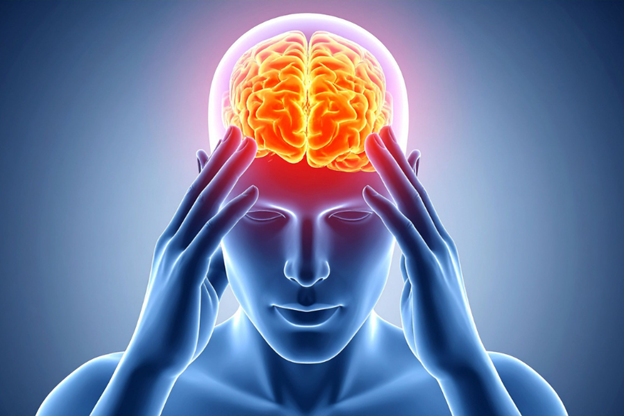A TBI brain injury can change your world in a moment. You want to know what comes next, how recovery works, and who will guide you through it. You also want a plan you can rely on. Rehabilitation gives you that plan. It turns uncertainty into daily steps, and daily steps into steady wins.
In the next sections, you’ll see how rehab unfolds from hospital care to home routines, why therapy types matter, and how your support system fuels progress. You’ll learn what to expect, how to pace your energy, and where Advanced Brain & Spine Surgical Centre fits into your journey.
The First 72 Hours: Stabilize, Protect, Prepare
Your care team begins by keeping you safe. In the hospital, doctors stabilize vital signs, monitor brain swelling, and prevent complications. These actions protect the brain and set the stage for recovery. Progress may feel slow at first, yet small changes are powerful signs that the brain is healing.
Once you’re stable, a personalized plan forms. Neurologists, therapists, nurses, and psychologists work together. Their mission is clear: prepare you for progress. Opening your eyes, following a command, or moving a hand becomes a milestone worth celebrating. Families are invited to be part of this stage so you feel supported and never isolated. For some, this may also involve traumatic brain injury treatment designed to lower risks and encourage better outcomes.
Inpatient Rehab: Train Hard, Relearn Life
When you’re ready, you move into inpatient rehabilitation. This stage is structured and focused. You train several hours each day with a team that balances challenge with care. The goal is to rebuild strength, relearn skills, and restore daily independence.
Inpatient rehab includes:
- Physical therapy to rebuild balance, mobility, and coordination
- Occupational therapy to help with dressing, eating, and daily tasks
- Speech therapy to improve communication, swallowing, and comprehension
- Cognitive exercises to sharpen memory and problem-solving
Every activity has meaning. From sitting up in bed to walking down the hall, each step is tracked as progress. As your stamina improves, your plan grows with you. Before discharge, the team prepares you with home safety checks, caregiver training, and realistic goals. For patients recovering from sports injuries, these plans often build on concussion and head trauma care guidelines that promote safe healing.
Outpatient Momentum: Practice in the Real World
When you return home, outpatient therapy keeps the progress moving. Sessions are less intensive but still tailored to your needs. You’ll work with your therapists, then apply the skills in everyday settings—at home, in the community, and at work or school.
Your program may include reintegration support, workplace assessments, and adaptive strategies to help with energy management. You’ll also learn to set a pace that avoids burnout. Technology can play a role too, with aids that improve mobility, communication, or memory.
Outpatient therapy is about consistency and smart adjustments. If something feels overwhelming, your team adapts. If something becomes easy, they challenge you more. Over time, this builds independence and confidence. Many patients also benefit from neurological rehabilitation therapy, which combines physical, cognitive, and emotional care into a single program.
Mind, Mood, and Family: Your Emotional Lifeline
Recovery is not only physical. It affects your emotions, mood, and relationships. Some patients feel frustrated or anxious. Others may notice changes in personality or motivation. These challenges are real, and support makes a difference.
Therapists and psychologists help you understand these changes and give you tools to manage them. Counseling offers coping strategies. Family education teaches your loved ones how to provide the right support. Group programs connect you with others on the same path. When your circle understands the process, you gain strength to keep going.
Healthy habits also matter. Rest, hydration, good nutrition, and light exercise support brain healing. Routines protect your focus, and breaks prevent fatigue. Step by step, steady habits bring lasting gains. Many patients also rely on brain injury recovery services that extend beyond clinics to help with daily living.
Long Game: Milestones, Plateaus, and Progress You Can Trust
Recovery has no fixed timeline. Some people see results in weeks, others in months. You may hit plateaus, but that does not mean progress has stopped. The brain continues to repair itself and build new pathways. Your team will review goals, refresh exercises, and adjust your plan when needed.
A long-term program may include:
- Regular goal-setting from self-care to complex tasks
- Home exercise programs that fit your routine
- Medical follow-ups for ongoing care and adjustments
- School or workplace adaptations that support independence
Measure what matters most to you. Dressing on your own. Walking outside. Reading a book. Returning to work part-time. Each step forward builds confidence for the next. When needed, options like neurosurgery for head injuries may be part of the broader recovery plan.
If you want a partner throughout this journey, Advanced Brain & Spine Surgical Centre can support you at every stage. Explore care options on our TBI brain injury page and see how a coordinated team can help you move forward with hope.
Conclusion
Recovery is a path, not a sprint. With the right support, patience, and structured care, you can rebuild your strength and independence. Rehabilitation gives direction to your energy and purpose to your progress. It turns today’s effort into tomorrow’s ability. If you’re ready to start or seeking expert guidance, we’re here to help you heal and thrive after a TBI brain injury.

